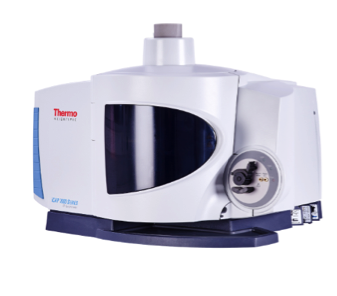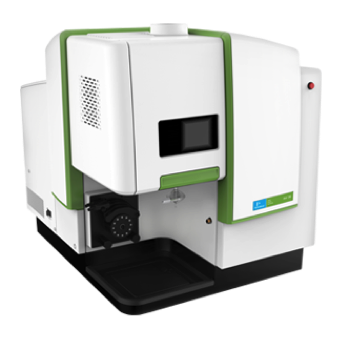April 2, 2019 -- Our next piece in the Atomic Spec series will feature Inductively Coupled Plasma (ICP) and Glow Discharge Spectroscopy. ICP is a technique for atomic analysis that relies on atomic emission. ICP is sometimes referred to as ICP-AES or ICP-OES (atomic/optical emission spectroscopy). When given enough energy to put in an excited state, atoms of a particular element emit a certain pattern of light frequencies than can be used to identify the element and its abundance in a sample.

In ICP, the excitation energy comes from plasma generated by a plasma torch. A nebulizer sprays a portion of the aqueous sample into the plasma and detectors analyze the light emitted by the energized atoms. ICP’s primary advantage is that it can generally perform faster analyses of multiple elements than AA spectroscopy, making ICP a standard instrument of choice for man applications, particularly in environmental testing.
ICP is widely used in environmental science. For example, the technology can provide a means to detecting minor and trace levels of up to 50 elements. More importantly, the determination process takes a research no more than 2 minutes per sample. The quick and precise nature of ICP makes it a benefit to many research settings.
Within ICP, there are several product divisions. The most common instruments are simultaneous instruments that use a solid-state detector to analyze the entire spectrum at once. Other simultaneous instruments use multiple photomultiplier tubes (PMT) to measure a number of specific spectral lines for measuring a number of particular elements of interest. These PMT-based simultaneous systems have become rare enough that the market demand for these instruments has been joined with the solid-state simultaneous instruments to form a single product segment.

Sequential instruments scan through the entire spectrum, which takes more time but can be more sensitive than simultaneous systems. Two related product categories exist for (mainly) solid samples: glow discharge spectroscopy (GD), and laser-induced breakdown spectroscopy (LIBS). In GD spectroscopy, plasma sputters atoms off the sample, with the rest of the instrument behaving similarly to ICP. In LIBS, a high-power laser is used to ionize the sample. GD is ideal in order to obtain measurements from materials including alloys, graphite, metals, oxides, and more. Technically speaking, it is sensitive down to parts per billion detection and can identify all stable isotopes of elements except for Hydrogen. LIBS is similar to GD in that it is great for broad elemental detection and detects in a range of sample types including soils, metals, semiconductors and more. Either technique can be used alone, but some researchers have begun to use a dual glow discharge laser induced breakdown spectroscopy method as it combines the benefits both individually has to offer.
What do you think?
Have you tried ICP or GD spec before? What would make these technologies work even better for your research? Join the discussion below!
Copyright © 2019 scienceboard.net


